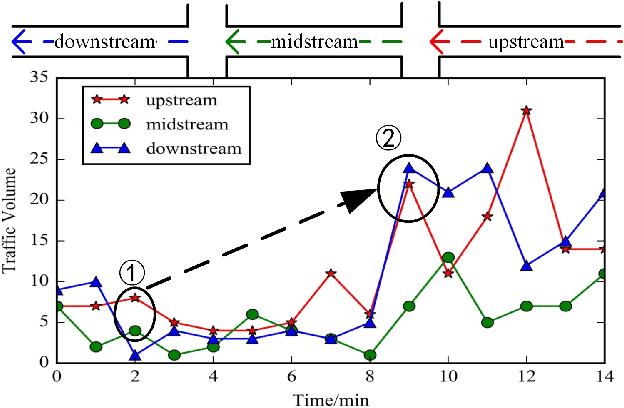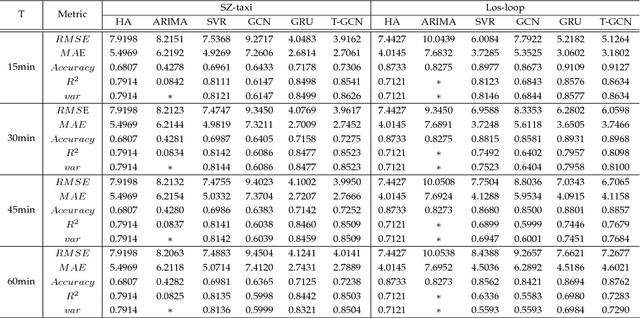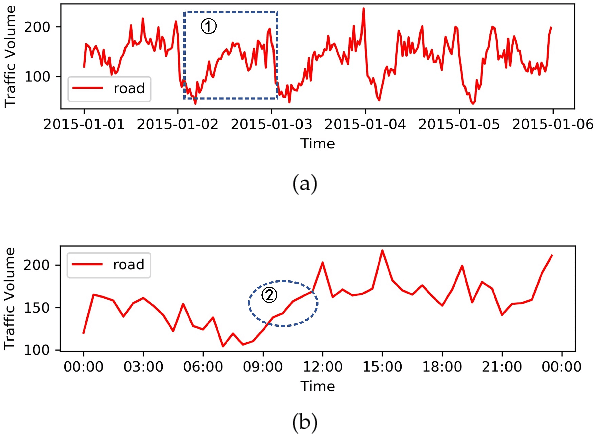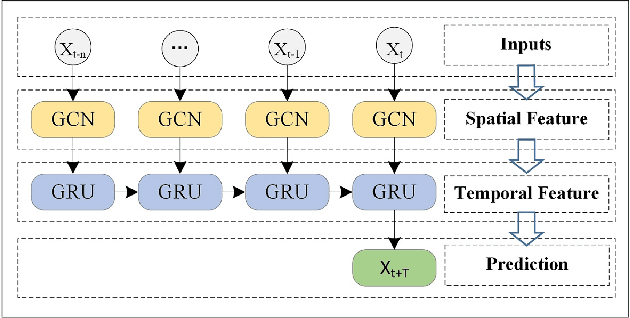Yujiao Song
A3T-GCN: Attention Temporal Graph Convolutional Network for Traffic Forecasting
Jun 20, 2020



Abstract:Accurate real-time traffic forecasting is a core technological problem against the implementation of the intelligent transportation system. However, it remains challenging considering the complex spatial and temporal dependencies among traffic flows. In the spatial dimension, due to the connectivity of the road network, the traffic flows between linked roads are closely related. In terms of the temporal factor, although there exists a tendency among adjacent time points in general, the importance of distant past points is not necessarily smaller than that of recent past points since traffic flows are also affected by external factors. In this study, an attention temporal graph convolutional network (A3T-GCN) traffic forecasting method was proposed to simultaneously capture global temporal dynamics and spatial correlations. The A3T-GCN model learns the short-time trend in time series by using the gated recurrent units and learns the spatial dependence based on the topology of the road network through the graph convolutional network. Moreover, the attention mechanism was introduced to adjust the importance of different time points and assemble global temporal information to improve prediction accuracy. Experimental results in real-world datasets demonstrate the effectiveness and robustness of proposed A3T-GCN. The source code can be visited at https://github.com/lehaifeng/T-GCN/A3T.
Temporal Graph Convolutional Network for Urban Traffic Flow Prediction Method
Dec 05, 2018



Abstract:Accurate and real-time traffic forecasting plays an important role in the Intelligent Traffic System (ITS) and is of great significance for urban traffic planning, traffic management, and traffic control. However, traffic forecasting has always been considered an open scientific issue, owing to the constraints of urban road network topological structure and the law of dynamic change with time, namely, spatial dependence and temporal dependence. To capture the spatial and temporal dependences simultaneously, we propose a novel neural network-based traffic forecasting method, the temporal graph convolutional network (T-GCN) model, which is in combination with the graph convolutional network (GCN) and gated recurrent unit (GRU). Specifically, the graph convolutional network is used to learn complex topological structures to capture the spatial dependence and the gated recurrent unit is used to learn dynamic changes of traffic flow to capture the temporal dependence. Then, the T-GCN model is employed to forecast traffic based on the urban road network. Experiments demonstrate that our T-GCN model can obtain the spatiotemporal correlation from traffic data and the predictions outperform state-of-art baselines on real-world traffic datasets. Our tensorflow implementation of T-GCN is available at https://github.com/lehaifeng/T-GCN.
 Add to Chrome
Add to Chrome Add to Firefox
Add to Firefox Add to Edge
Add to Edge